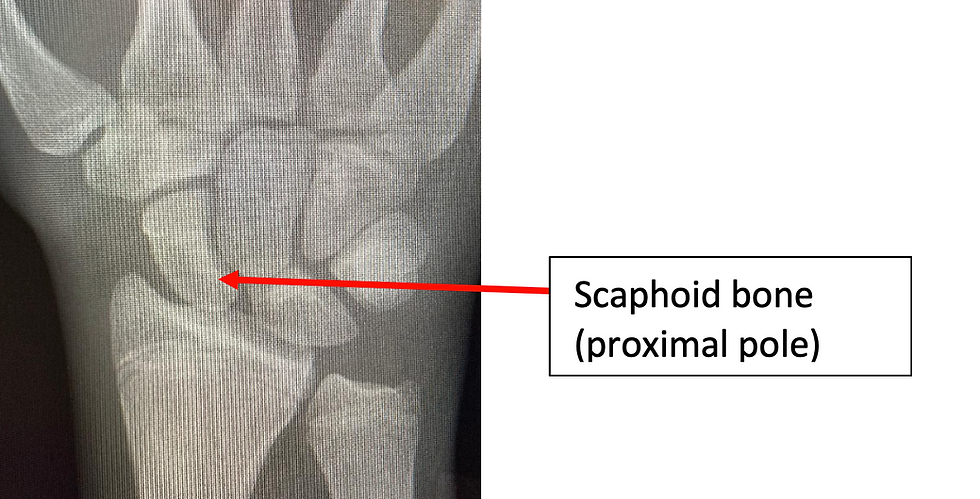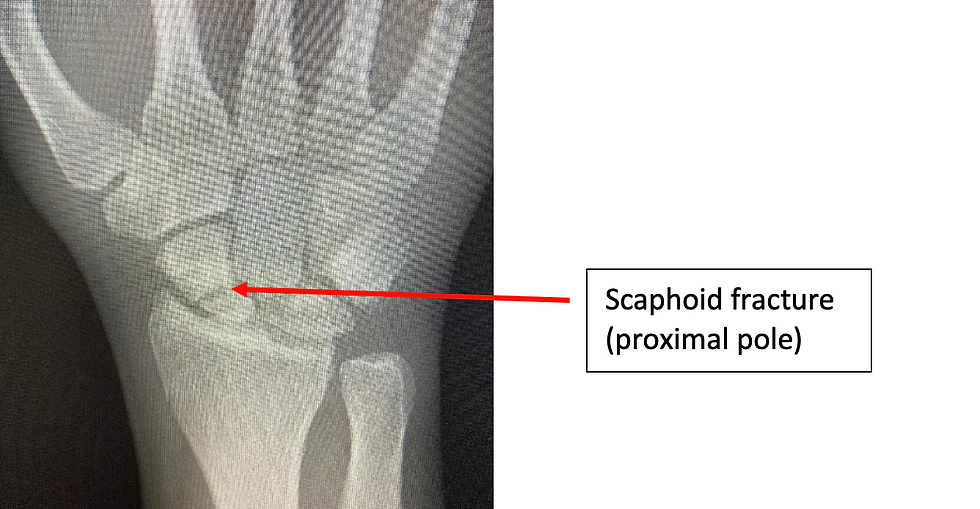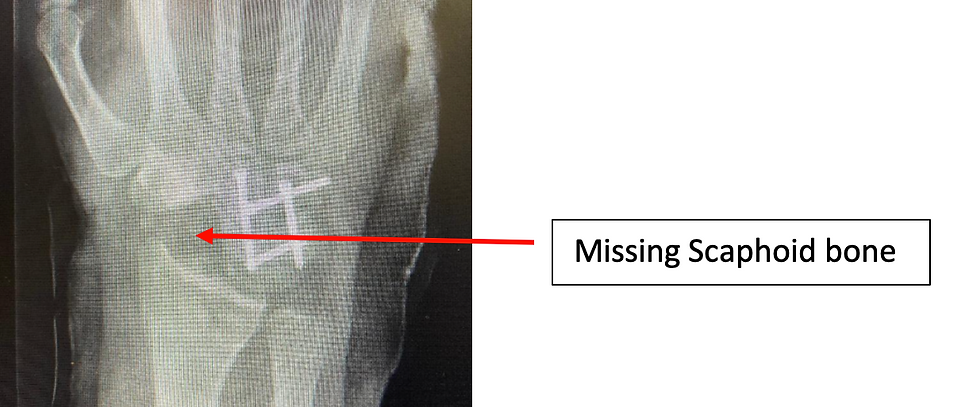CASE OF THE MONTH: An Invisible but Serious Wrist Fracture
- alicebrem
- Nov 30, 2020
- 2 min read

A 21 year old footballer suffered an injury to his wrist when the force of the ball wrenched his hand backwards while he was goal-keeping. He felt discomfort immediately near the base of his thumb and had to stop playing because of this pain.
The wrist did not swell up noticeably but the pain persisted so he went to his local accident and emergency department where an x-ray was performed. He was told there were no broken bones to see and it was probably a ‘sprain’ injury. He was advised to go back 2 weeks later for another x-ray in case a fracture was present but not yet visible.

He got busy at work and the pain settled down significantly so, in the end, he didn't make it back for his second x-ray.He assumed his sprain injury would gradually get better.
Over the next few months he was aware ‘something was not quite right’ in his wrist even though he could use it for normal activities. As time passed strenuous activities caused increasing pain near the base of his thumb. Eventually, after 10 months, he went to his GP who arranged another x-ray of his wrist. This time a broken bone was visible and he was told he had suffered a fracture of his scaphoid bone. The fracture was in the ‘proximal pole’ of the bone and he was told this injury has poor ability to heal. He was referred to his local Hand and Wrist Surgeon for further treatment.

The Hand Surgeon recommended an operation using a screw and bone graft to try to get the scaphoid bone to heal. The surgeon checked whether the young man smoked because this would mean the operation was very likely to fail. Even without smoking the chance of successful bone healing was not high.
The operation went ahead but the bone did not heal and the wrist remained symptomatic. A second operation was performed using a specialised 'free flap of vascularised bone' (ie bone with its own blood supply) from the forearm but, sadly, this also failed to get the scaphoid bone to heal.
The wrist remained painful impairing the young man's ability to work and perform activities at home so one year later another operation was performed to remove the broken, painful scaphoid bone together with a fusion procedure to the remaining wrist small carpal bones.

This operation was successful at eliminating the wrist pain but there is a reduced range of motion in the wrist which is permanent and a small risk of further surgery being required in the future.
Take home message:
Scaphoid fractures are not always visible on x-rays straight away. You may need to re-xray the wrist after 2 weeks to spot the fracture. It is preferable to get more sophisticated imaging such as a CT scan or MRI scan straight away as these can show the fracture immediately.
If missed a scaphoid fracture has serious consequences which usually manifests as gradually increasing pain and stiffness due to failure of the bone to heal and subsequent arthritis. Treatment to prevent this requires surgery as described above.
If a scaphoid fracture is identified early the prognosis is generally much better.




Comments